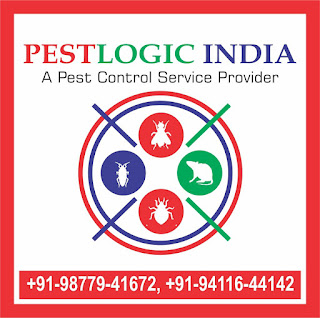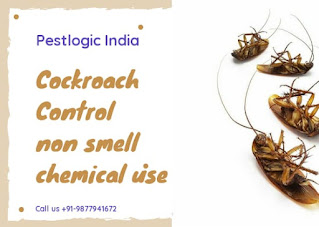Rodent Control with Pestlogic India
#GetRidOfMiceAndRats
Contact us 9877941672, 9411644142
website : www.ipcsindia.com
email. pestlogicindia@gmail.com
Contact us 9877941672, 9411644142
website : www.ipcsindia.com
email. pestlogicindia@gmail.com
You will want a complete rodent elimination to occur before the rodents move to another area. A successful rodent control program includes a combination of baiting and trapping for the highest rate of success. However, if the rodent population is large, begin with a high quality rodent bait, in order to quickly knock down a population and prevent rapid growth.
Consider integrating any rodent control program with exclusion techniques, a general cleanup, and removal of their hiding places (harboraging areas.)
Rodent Inspections, Rodent Exclusion, and Sanitation measures are critical in rodent control measures.
We offer traps and mice for both mice control and for rat control programs.
Using Rodent Baits
When baiting initially, try not to disturb their original habitats or they may run to another area. After baiting has begun, continue with sanitation procedures, food source removal, and harborage removal to ensure additional rodents from nearby areas are not attracted to your location. We also carry rodent bait stations to hold the bait in ensure that children and pets can not access the poison bait.
#UsingRodentTraps
Choosing the right size trap is critical for trapping rodents. Inspect for signs of rat activity or mice activity. If you have rats and select mice traps the traps would be too small (the trapping mechanism would not be sufficient for a rat). If you have mice and choose rat traps, the traps would be too large (not sensitive enough to trigger the trap) for the body weight of a mouse.
One of the ways to tell the difference between rats or mice are their feces. View House Mouse, Norway Rats, and Roof Rats to read more about their identification and differences. If you have mice, you will discover a lot of droppings. They look like small beads.
Most people that begin a trapping program, do not set out enough traps. Place traps in the area of rodent activity and signs of infestation. If you have mice, place the traps a couple feet apart in the area of activity. If you have rats, place the traps about 15-20 apart.
Most people that begin a trapping program, do not set out enough traps. Place traps in the area of rodent activity and signs of infestation. If you have mice, place the traps a couple feet apart in the area of activity. If you have rats, place the traps about 15-20 apart.
Rodent Damage and Disease
Mice and Rats can be found not only in our homes, but supermarkets, restaurants, warehouses, food processing facilities, livestock facilities, and farm fields.They also cause damage to our buildings by their burrowing and gnawing activity. Rodents will gnaw through many types of materials in order to reach a location including lead sheathing, cinder block, aluminum siding and some concrete. Rodents are suspected for causing fires by gnawing on electrical wiring.
Through the ages, rodents have been the cause of some tremendous plagues and diseases. In years past, rodents were responsible for the spread of many diseases. Today, due to increased sanitation and effective rodent and insect control programs, the threat of most diseases from rodents is not as critical. The common House mouse is the most common health pest, due to allergins that it spreads causing asthma and allergic rhinitis. The mouse carries a protein it its blood that can trigger these reactions in suspectible people.
In the southwestern part of the United States, the hanta viruses have been active. Most of these cases have been attributed to the cotton rat and white-foot mice, although the Norway rat has been associated with various hanta virus strains.
Rodents also contaminate a huge amount of the world's food supply by their urine and feces.
You will want a complete rodent elimination to occur before the rodents move to another area. A successful rodent control program includes a combination of baiting and trapping for the highest rate of success. However, if the rodent population is large, begin with a high quality rodent bait, in order to quickly knock down a population and prevent rapid growth.
Consider integrating any rodent control program with exclusion techniques, a general cleanup, and removal of their hiding places (harboraging areas.)
Rodent Inspections, Rodent Exclusion, and Sanitation measures are critical in rodent control measures.
We offer traps and mice for both mice control and for rat control programs.
Using Rodent Baits
When baiting initially, try not to disturb their original habitats or they may run to another area. After baiting has begun, continue with sanitation procedures, food source removal, and harborage removal to ensure additional rodents from nearby areas are not attracted to your location. We also carry rodent bait stations to hold the bait in ensure that children and pets can not access the poison bait.
#UsingRodentTraps
Choosing the right size trap is critical for trapping rodents. Inspect for signs of rat activity or mice activity. If you have rats and select mice traps the traps would be too small (the trapping mechanism would not be sufficient for a rat). If you have mice and choose rat traps, the traps would be too large (not sensitive enough to trigger the trap) for the body weight of a mouse.
One of the ways to tell the difference between rats or mice are their feces. View House Mouse, Norway Rats, and Roof Rats to read more about their identification and differences. If you have mice, you will discover a lot of droppings. They look like small beads.
Most people that begin a trapping program, do not set out enough traps. Place traps in the area of rodent activity and signs of infestation. If you have mice, place the traps a couple feet apart in the area of activity. If you have rats, place the traps about 15-20 apart.
Most people that begin a trapping program, do not set out enough traps. Place traps in the area of rodent activity and signs of infestation. If you have mice, place the traps a couple feet apart in the area of activity. If you have rats, place the traps about 15-20 apart.
Rodent Damage and Disease
Mice and Rats can be found not only in our homes, but supermarkets, restaurants, warehouses, food processing facilities, livestock facilities, and farm fields.They also cause damage to our buildings by their burrowing and gnawing activity. Rodents will gnaw through many types of materials in order to reach a location including lead sheathing, cinder block, aluminum siding and some concrete. Rodents are suspected for causing fires by gnawing on electrical wiring.
Through the ages, rodents have been the cause of some tremendous plagues and diseases. In years past, rodents were responsible for the spread of many diseases. Today, due to increased sanitation and effective rodent and insect control programs, the threat of most diseases from rodents is not as critical. The common House mouse is the most common health pest, due to allergins that it spreads causing asthma and allergic rhinitis. The mouse carries a protein it its blood that can trigger these reactions in suspectible people.
In the southwestern part of the United States, the hanta viruses have been active. Most of these cases have been attributed to the cotton rat and white-foot mice, although the Norway rat has been associated with various hanta virus strains.
Rodents also contaminate a huge amount of the world's food supply by their urine and feces.







Comments